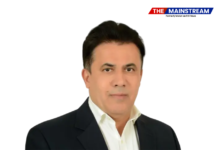89% of leaders surveyed admitted their employees would need to improve their skillsets to best leverage AI capabilities.
Artificial intelligence will be the top investment area for CIOs in 2024. IT leaders see in generative AI an opportunity to accelerate innovation, improve employee productivity, and gain a competitive advantage. Unfortunately, investing in AI is not cheap. CIOs will need to find a significant budget to make traction in their AI roadmap, and we believe IT asset management (ITAM) and FinOps may help them find those dollars.
My company recently released its 2024 IT Priorities Report, an annual poll of more than 800 global IT leaders to understand their priorities and challenges for the coming year. Given all the hype surrounding AI in 2023, it was no surprise that integrating AI into their business operations was listed as the top priority for IT leaders (35%) going into 2024, followed by reducing IT costs (28%) and reducing security risks (28%).
Between these three priorities, the unspoken challenge for CIOs becomes: how do you find the budget for competing initiatives?
This conundrum is mirrored in the delicate budget balance every CIO faces: money is needed to run the business, grow the business, and secure the business. The budget for daily operations to run the business must be reduced to meet new demands for innovation to grow the business, and the dollars for growth must be balanced with the increasing budgetary needs tied to securing the business.
As catalogued in the IT Priorities Report, 82% of IT leaders stated they were completely prepared to leverage generative AI, with 62% already seeing increased investment in tools like ChatGPT and Google Bard. But 21% say they are already overspending on generative AI tools. Additionally, 89% of leaders surveyed admitted their employees would need to improve their skillsets to best leverage AI capabilities.
In summary, innovation in AI is going to require significant investment for enterprises to get it off the ground. Whether it’s building new products leveraging AI, rearchitecting data models, investing in employee training, recruiting new hires, or upgrading to premium software licenses (in the vein of Microsoft Copilot, only available for Microsoft’s top-tier license), IT innovation budgets need to increase to support AI development.
So where are organizations going to find the budget to balance these competing priorities?
AI and budget are two separate conversations.
Investing in AI is not a question for CIOs, especially those in large enterprises. Their CEOs understand the importance of AI and fear the risk of being left behind by competitors who invest early or startups that lack governance concerns that make it costlier for larger organizations to fully adopt AI technologies. These CEO concerns are not unfounded. The IT Priorities Report survey reported a higher number of IT leaders in smaller companies (less than 1,000 employees) saying they were ready to implement AI versus their IT peers at larger organizations.
For CIOs, the last few years have been incredibly challenging. Budgets for security and running the business were increased to facilitate remote work during the pandemic. These same budgets were then brought back down at the onset of the economic downturn in late 2022. These budget decreases have continued into 2023, leaving CIOs with little wiggle room for large investments in AI.
Unfortunately, innovating, developing, or modifying generative AI technologies for organizations cannot be conflated with budgetary pressure, as the time is now to build a foundation of AI knowledge within enterprises. From embedding AI within products, using AI tooling to improve speed in solving customer issues, or leveraging copilots to complement engineering efforts, the possibilities for AI are endless for those willing to invest in them early.
How to Fund Innovation with ITAM and FinOps
IT asset management (ITAM) and FinOps tools can be used by the organization to reduce its budgetary “run the business” spend to fund investment in AI. ITAM and FinOps tools help CIOs reduce spend in their organization—unused licenses, SaaS sprawl, unnecessary cloud spend, and other forms of waste.
Most organizations, even large enterprises, use spreadsheets and, at best, limited tooling to manage the millions of dollars they spend on their technology budgets. A complete view of everything at play within the IT tech stack, including metering, usage, licenses, SaaS, cloud, hardware, software, and everything in between, is critical for gaining the necessary understanding to make meaningful budgetary cuts to find savings for AI investment.
The savings are there. Realizing the savings takes work, and preventing overspending that eats at AI budgets requires discipline. Our survey respondents stated that 67% of IT leaders believed business units were spending more on SaaS and cloud services than needed. With rising vendor costs and increased cloud pricing on the horizon, technology budgets are going to get even harder to manage.
Even credit ratings rely on ITAM. The global credit ratings agency Standard & Poor released a report earlier this year exploring the financial risk from cybersecurity threats for organizations that do not have a proper ITAM practice in place. This lack, and the subsequent increase in not just cybersecurity vulnerabilities but also the costs to respond to such a crisis, can result in the downgrading of organizational credit ratings.
In addition to risk, the ability to find cost savings is paramount and can be found in multiple ways. Finding efficiency is a huge driver and allows for better consolidation. This is especially important for leaders, as 88% of leaders surveyed for the IT Priorities Report stated they were moving toward platforms and away from point tools. Redundant and duplicate SaaS applications are a common issue in large organizations, as individual business units often procure applications without understanding IT procurement practices and policies.
Establishing an innovative environment
With tighter budgets in 2024, CIOs will need to optimize in order to innovate. For organizations to fully invest in AI and see proper returns, reducing their spend on non-AI-related software and cloud services is critical. One-off exercises to clean up costs and technology usage data will not yield the necessary savings to fund investment in AI. Organizations must leverage continuous programs and tooling such as ITAM and FinOps to solve the problem of finding money for AI budgets by rightsizing licenses, reducing unnecessary cloud spend, and getting control over SaaS application sprawl.
Do Follow: CIO News LinkedIn Account | CIO News Facebook | CIO News Youtube | CIO News Twitter
About us:
CIO News, a proprietary of Mercadeo, produces award-winning content and resources for IT leaders across any industry through print articles and recorded video interviews on topics in the technology sector such as Digital Transformation, Artificial Intelligence (AI), Machine Learning (ML), Cloud, Robotics, Cyber-security, Data, Analytics, SOC, SASE, among other technology topics.






